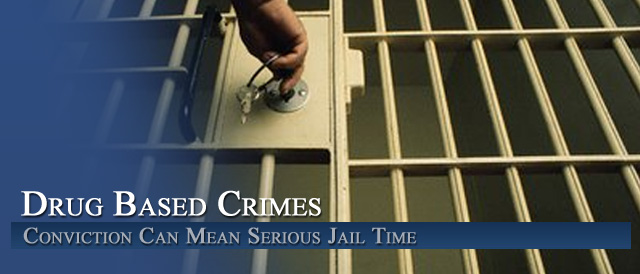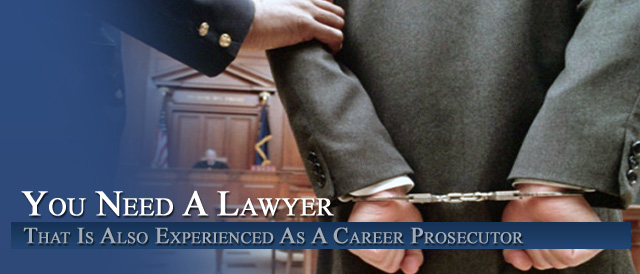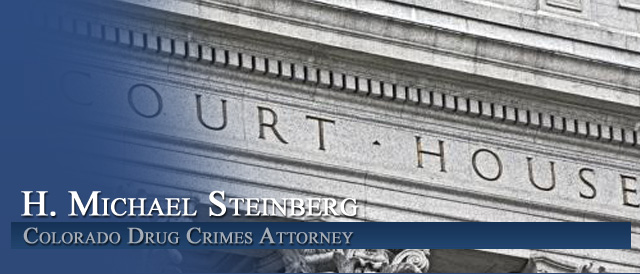




Part IV – Understanding Colorado Criminal Law – Authority of Colorado Police and Law Enforcement – Identification of the Suspect – ID
What follows are the Constitutional Standards Applied to Identification Procedures Used During Colorado Law Enforcement Investigations
An out of court identification procedure will be inadmissible if it is so impermissibly suggestive and conducive to mistaken identification at trial so as to amount to a denial of defendant’s constitutional right to Due Process of law.
Courts look at the totality of the circumstances to decide whether Due Process rights were violated.
An Out-of-Court Identification Procedure May Not Be Impermissibly Suggestive
The courts acknowledge that a perfect identification procedure is impossible and there will always be some inherent suggestiveness, however, an identification procedure cannot be impermissibly suggestive.
The suggestiveness of an identification procedure however may only affect the weight a judge or jury will give to the identification, not the admissibility of the actual identification at trial.
Statements made to witnesses viewing an identification procedure
Statements made to witnesses viewing an identification procedure or the methods used may make the procedure suggestive.
The Colorado court of appeals has found the following advisement acceptable when a witness is shown a “six pack” of photos (one is the suspect of course)
“This group of individuals may or may not contain the person that committed [the crime]. The fact that you have been asked to view this line-up shall not cause you to believe that the guilty person has been apprehended.
You do not have to identify anyone. It is just as important to free innocent persons from suspicion as it is to identify those that are guilty.”
This was taken from the Colorado Case of People v. Martinez, 734 P.2d 126 (Colo. App. 86).
In-Court Identification After Improper Out-of-Court Identification Procedure
Even an improperly suggestive out-of-court identification procedure will not automatically prevent a witness from making an in-court identification. Courts will only exclude such an in- court identification if the impermissibly suggestive out-of-court identification procedure “gives rise to a very substantial likelihood of irreparable misidentification.“
The U.S. Supreme Court in the case of Manson v. Brathwaite, 97 S.Ct. 2243 (1976) provides
the following factors which are to be considered in evaluating the likelihood of misidentification:
1. The opportunity of the witness to view the criminal at the time of the crime (lighting, length of observation, proximity of witness and criminal, etc.);
All of these factors are to guide the Court in determining whether the in-court identification is based upon an “independent source” (i.e., the observations at the time of the crime) or upon the prior suggestive out-of-court identification procedure.
If based upon such an independent source, an in-court identification will be allowed despite the fact that there has been an impermissibly suggestive out-of-court identification procedure.
Identification Procedures For Suspects Whom Police Do Not Yet Have Probable Cause To Arrest:
Colorado Criminal Rule 41.1
(This rule only applies to Class 1 misdemeanor or higher offenses.)
Rule 41.1 of the Colorado Rules of Criminal Procedure provides for a method of obtaining non-testimonial identification from suspects for whom there is not yet probable cause to arrest.
Rule 41.1 should be consulted for the specific requirements for obtaining a Court Order.
Remember that a Rule 41.1 Order may only be executed in the DAYTIME.
A Rule 41.1 order is the proper method for conducting identification procedures with a suspect who is in custody for another unrelated crime.
Once a suspect is in custody for the crime the Police are investigating, Colorado case law says that use of the Rule 4 1. 1 procedure is improper.
In such cases, the Prosecutor will usually request an order for Non- testimonial Identification pursuant to Criminal Rule 16 of the Colorado Rules of Criminal Procedure.
Live or Photo Line-Ups of Objects
Sometimes the Police may conduct a line-up of objects rather than persons. This may be the case when the Detective wants to see if a witness can identify a certain object (e.g., car, gun, knife, etc.) used in a crime. The standards here are looser than they are with people.
Here is an Example of This Principle:
A Witness to a homicide did not see the suspect but they saw him drive away in a “late model maroon colored Pontiac or Buick with temporary plates.” Rather than just displaying a single suspect car to a witness, the Police may try to compile a line-up of other similar vehicles in order to see if a positive identification can be made.
Identification Procedure is Not Necessary if Witness Knows the Suspect
If a witness knows the suspect (e.g., spouse, friend, neighbor, etc.) the police do not need to conduct any identification procedures.
The police may show the witness a single photo of the suspect to make sure that everyone is talking about the same person. But this procedure is not necessary. Such a procedure is considered legally acceptable and will not, in most instances, “taint” a later in-court identification.
However, in cases where the witnesses are merely casual acquaintances or have known a suspect for only a short period of time, the above procedure may in fact taint the identification
The better practice to go ahead and conduct an identification procedure.
Best Practices for Identification Procedures
1. If this is a live line-up, the suspect should be advised of his right to counsel.
2. If there are multiple viewers of the live lineup, the witnesses should be separated during the entire procedure and they should not be allowed to hear comments of any other witnesses.
3. The Officer’s instructions to the witnesses should not be suggestive in any manner.
Each witness should be told that:
a. The suspect may or may not be in the lineup/photos
b. The witness should observe all of the persons/photos before making an identification
c. (If appropriate) That the persons in the lineup/photos may differ from the witnesses recollection because of changes in appearance or lighting conditions.
d. The order in which the persons/photos appear has no meaning.
e. (If multiple witnesses) The witness should not discuss his/her identification procedure with any other witness until after trial. Likewise, a witness should never be informed as to whether or not other witnesses have identified the suspect.
4. Accidental viewings by the witness of either the suspect or the other participants in a live line-up should be prevented. Make sure Police participants will exit in a way to avoid being seen by a witness. Also, make sure that a witness will not observe an in-custody suspect being led away in handcuffs.
The Police will often document the procedures. Using tape recordings when possible. In some cases the police may use video recordings for later documentation.
The police will typically record the following information:
a. The identity of all those present (officers and participants).
b. The instructions given to each witness.
c. Statements made by the witnesses during the procedure.
d. Physical descriptions of the participants.
e. A photo (color if possible) of the lineup or the original photo array.
f. The length of time that it took the witness to make an identification.
g. Any suggestions/objections made by suspect’s attorney. Keep a record also of the suggestions that Police followed.
The Right to Have a Lawyer Present During Identification Procedures
A defendant generally has the right to have a lawyer present at any pretrial identification procedure at which the defendant is present and which is conducted in relation to a crime with which he has been formally charged. He retains this right even if he is released prior to trial. Kirby v. Illinois, 92 S.Ct. 1877 (1972).
Persons not formally charged, even if they have been arrested, do not have a right to a lawyer at an identification procedure. However, in major crimes, the D.A. will often be consulted on whether to allow the presence of a lawyer in these circumstances. The preference is to allow defense lawyers to be present if possible.
Diligent efforts should also be made to have counsel present at an emergency identification. However, even if the suspect has been formally charged, the Police may proceed in his absence if the delay caused by notifying him and awaiting his arrival will result in the sacrifice of necessary identification evidence.
Counsel is never required at photographic identification procedures.
The Issue of Informing the Suspect of Right to Counsel
The police will typically inform a defendant that he/she has the right to counsel and the right to have a lawyer notified and to be present at the identification procedure whether or not the officer has already given the suspect the Miranda warnings.
The warning may contain the following or similar language:
1. You have been charged with _________.
2. You do not have a right to refuse to be in a lineup and the results of the lineup can and will be used against you in a court of law.
3. You have the right to have a lawyer present at the lineup.
4. If you are unable to afford a lawyer, one will be appointed for Police free of charge prior to the lineup.
5. The lineup will be delayed for a reasonable time after the lawyer has been notified, in order to allow the lawyer to appear.
6. (Where voice identification is desired) You and the other participants in the lineup will be asked to repeat certain words, phrases or sentences spoken by the person who committed the crime. You have no right to refuse to repeat them. (If the Miranda warning has been given, it should also be explained that the right to remain silent does not apply to voice identification procedures.)
Waiver of Rights
After the warnings, the following questions will typically be asked and an affirmative reply obtained to each question is sought.
1. Do you understand each of these rights I have explained to you?
2. Having these rights in mind do you wish to waive your right to have a lawyer at your lineup?
The Conduct of The Lawyer at the Identification Procedure
The primary function of a lawyer at the identification procedure is to observe the proceedings.
Before the procedure actually begins, the police should inform the lawyer that he has a right to consult with his client. But the police should warn him that he is not permitted to speak to the witnesses or his client during the procedure and that he is required to maintain proper decorum throughout. If he causes a disturbance, the police will most often warn him to stop or leave.
The police are authorized to exclude the lawyer if the disruption continues. The officer’s will advise the attorney, however, that if he has any questions, comments or suggestions he should address them to police or to the district attorney.
The Definition of an “Informal identification procedure.”
An informal identification procedure may occur when the police arrange to have a witness observe a suspect who is at liberty. Its purpose is to allow the witness to attempt an identification from a fair selection of persons in situations where conducting a formal lineup is not possible and too much time has passed since the commission of the crime to allow a one-on-one confrontation.
When an Informal Identification May Be Used
Law enforcement may conduct an informal identification procedure when they either lack probable cause to arrest a definite suspect or when the identity of the suspect is unknown, or when the police do not have a usable photograph of the suspect.
Law enforcement may arrange to have the witness view the suspect without the suspect being aware that he is under observation. The suspect does not have a right to counsel because he has not been formally charged.
Procedure for Conducting Informal Identifications
To minimize suggestiveness, the informal identification procedure is usually conducted for only one witness at a time and typically it is done in the following manner:
Single Location
The Police may take the witness to a single location where the suspect and a number of people, some of whom are similar to him, are likely to be found or are likely to pass by.
Multiple Locations
If the police believes that no single location is likely to have a number of people who physically resemble the suspect, the officer will often take the witness to several similar locations one of which the officer expects to find the suspect.
Instructions to the Witness
The conditions of an informal identification procedure are much less subject to control by the police as compared to those of a formal lineup and, therefore, are MUCH MORE likely to be suggestive.
The officer must scrupulously avoid, by word or gesture, suggesting to the witness that officer believes a particular individual may have committed the crime.
Procedure After Viewing the Suspect
If the witness fails to identify the suspect, the police are required to have the witness leave the location without drawing his attention to the suspect. However, if the witness positively identifies the suspect or identifies him with sufficient certainty so that in combination with other evidence police now have probable cause to make an arrest, the police may make the arrest provided that the witness is not likely to be placed in unreasonable danger
However the officer may not arrest him in that location and instead seek an arrest warrant – but one is not required.
If the police do not know a suspect’s name after a witness has identified him in an informal identification procedure, the officer is allowed to detain that person pursuant to normal “Stop” guidelines to obtain identification information.
The “Cruising the Area” Identification Procedure
When an arrest has not yet been made, the police may ask an eyewitness to a very recent crime to accompany the officer in a police vehicle to cruise an area where the officer may reasonably expect to find the perpetrator.
The purpose of a cruise is to give the witness an opportunity to point out the person who may have committed the crime.
When Cruising an Area is Appropriate
The police may conduct a cruise of the area with a witness when:
1. the witness has given he police a description of the suspect and indicates an ability to recognize him; and
2. The police have reason to believe the suspect may be found in a public place in the area; and
3. the witness is willing to cooperate and
4. The police believe that the confrontation will take place within a reasonable time after commission of the crime.
Here are Examples of This Principle:
Example 1:
The police are patrolling when an elderly woman flags down the cruiser. She tells the officer that while sitting on a bench a few minutes ago, a man grabbed her purse and ran toward Tremont Street. She describes the man to the officer and agrees to accompany the officer yo look for him.
Her description suggests to the police that Bobby Parker, whom the police have arrested in the past for similar offenses, may be the culprit. The police know that Parker often goes to the Arcade on Spruce Street. They drive directly to the Arcade and see through the window that, other than the cashier, Parker is the only person inside.
Because only a short time has passed since the crime occurred, the officer may take the woman into the Arcade and allow her to view Parker. They should not tell her about Parker’s past arrests or in any other way suggest that they think he may be responsible.
Example 2:
At 1:00 a.m., the police respond to a theft call to meet a man at the comer of Tremont and Stuart.
When Police arrive, John Tice tells the police that several hours ago, between 8 and 9 p.m., he was walking on LaGrange Street. A woman approached him and asked him if he would like to go out. He refused but she rubbed up against him and it was a couple of minutes before he could get away. He then went into a bar to get a drink and noticed that his wallet was missing. He didn’t report the incident earlier because be didn’t want his wife to find out that he was in the area. He has been looking for the woman but can’t find her and now he wants to go home but he doesn’t have any money.
Because several hours have passed since the crime occurred, the police do not take the victim to any locations at which he might see the suspect alone… they however attempt an informal identification by taking the victim to several crowded bars in the area and to the bus depot.
Eyewitness Identification of a Stopped Suspect (Confrontations)
When Police have stopped a person because they have reasonable suspicion that he is committing or has committed a recent crime, they may seek to obtain an eyewitness identification to help develop probable cause to arrest the suspect. Because they do not yet have probable cause to arrest him, they are prohibited from bringing the suspect back to the witness because moving the suspect could be viewed later as an illegal arrest.
This rule is from the Colorado case of People v. Cobbin, 692 P.2d 1069 (Colo. 84).
However, under certain circumstances, the police may detain the suspect where they stopped him to enable a witness to the crime to be brought there to attempt an identification. – This is known as a “show up.”
When Detention for an Identification Procedure is Legally Permissible
The police may exercise their authority to detain a suspect in order to conduct an eyewitness identification when:
1. They have reason to suspect that the person is committing or has committed a crime and police have stopped him for a threshold inquiry investigation; and
2. They believe that an eyewitness identification of the suspect will be helpful in developing probable cause to arrest; and
3. They believe that the witness may be able identify the suspect; and
4. The witness or witnesses can quickly be brought to the scene of the stop, and
5. They believe that the confrontation will take place within a reasonable time after the commission of the crime.
As a “rule of thumb” a one-on-one confrontation can legally take place when no more than one hour has passed from the time of the crime until the confrontation.
Preparation for Conducting the Identification
Detaining the Suspect and Permissible Length of Detention
The Police will typically first inform the suspect that they believe he may have been involved in the crime under investigation. Law enforcement may then ask him if he is willing to remain with the officers until the witness can be brought to the location of the stop to view him. If he refuses, the police will usually inform him that they will detain him a short time for this purpose.
Law enforcement may detain a suspect for as long as is reasonably necessary to conduct the identification procedure.
As a “rule of thumb,” a detention of up to twenty minutes will be found by a judge to be reasonable if there is a strong likelihood that the witness will be able to recognize the perpetrator and if the witness is expected to arrive at the scene shortly.
The reasonableness of a longer detention will be further supported if the crime is very serious.
The Location of Identification
Because the police do not yet have probable cause to make an arrest, in most situations they are required to arrange the identification procedure at the place where the police make the stop, unless the suspect consents to go with the police to another location. However, under special circumstances, law enforcement may move the suspect from the location of the stop without a court’s later viewing the transportation of the suspect as an illegal arrest.
These circumstances may include the gathering of a hostile crowd at the place of the stop or when the victim has been injured and is unable to be brought to the scene of the stop. Whenever it is necessary to move the suspect without his consent, the police must move him to the nearest location where the identification procedure can be completed.
Conducting the Identification Procedure
If the witness requests, the police may have the suspect put on or remove outer garments. The police may also ask the suspect to repeat words or gestures used during the crime.
If conditions permit, the police can approximate the conditions of an informal lineup by having the suspect stand among other people. The police will show the suspect without visible restraint.
In some cases, if necessary may use non-deadly force to detain the suspect during the identification.
Arresting or Releasing the Suspect
If law enforcement has developed probable cause to arrest the suspect, they are required to take precautions to make certain that the witness is not likely to be placed in unreasonable danger. However, if the witness or witnesses fail to make an identification and the police do not have enough other evidence to develop probable cause to arrest, they must allow the suspect to leave.
Emergency Identification Procedures
Whenever the police have reason to believe that a witness or suspect is in imminent danger of dying, they may, if necessary, present the suspect singly to the witness. The purpose of this procedure is to secure identification evidence necessary to solve a crime or to use at trial and death may prevent conducting a less suggestive procedure at a later time.
Preparation for an Emergency Identification Procedure
Permission of Medical Authorities
The police will seek permission to conduct the identification procedure from the appropriate medical authorities before going to the hospital in the instance where the suspect is ill or injured. Police should not unnecessarily risk life by having the witness view the suspect without the permission of the hospital authorities or the injured person’s physician.
The Presence of a Lawyer
If the suspect has been arrested but not yet formally charged with the crime under investigation, he does not have the right to have counsel notified and present. But if he has been formally charged with the crime, the police will usually attempt to contact his lawyer before conducting the identification procedure.
Law enforcement is not obligated to sacrifice the chance of obtaining identification evidence either because police cannot contact the lawyer or because he/she is unable to arrive in time.
Informing the Suspect
While the police will usually inform the suspect, prior to the identification procedure, that they intend to show him to a witness, they may proceed without informing him if his physical condition prevents communication.
Conducting the Emergency Identification Procedure
The police are required to show the suspect to the witness in the least suggestive manner consistent with the physical condition of the person whose life is in jeopardy.
If the witness is hospitalized, the police will usually bring the suspect and, if possible, a few other people who roughly resemble him, into the witness’ room at the same time.
The police will then ask the witness if he recognizes anyone associated with the crime. When the suspect is hospitalized and the police bring the witness to the hospital for the identification, they will, if possible, attempt to take him past a number of other persons in addition to the suspect.
The police will then ask the witness if he recognizes anyone associated with the crime. Police are trained to avoid telling the witness anything about the suspect’s physical condition or its cause.
The Use of Photographs for Identification Purposes
Preliminary Considerations – When Photographs May Be Used
Photographs are used most frequently for identification purposes when the police have determined that it is necessary to obtain an eyewitness identification but the suspect is not in custody.
Photographs may also be used for identification purposes when the suspect is in custody but staging a lineup is impractical.
The police will usually conduct a photographic identification procedure when:
a. They have no definite suspect;
b. They have a definite suspect but his whereabouts are unknown;
c. They have a definite suspect but do not have probable cause to arrest him;
d. A definite suspect is in custody but is so far away that it is impractical for Police to arrange a lineup;
e. They have a definite suspect in custody but it is impractical to arrange a lineup because, for
example if the witness is unwilling to view a lineup, or the suspect threatens to be disruptive or it is difficult to arrange for suitable stand-ins; or
f. Police have a definite suspect who has been charged and released pending trial.
When Police intend to conduct a photographic identification procedure, Police should show the photos as soon as possible after commission of the crime. At this time the witness’ memory is freshest and the opportunity for a positive identification is greatest.
Instructions to Witnesses Prior to Viewing Photographs
To reduce the suggestiveness of the identification procedure and increase the reliability of an identification made by the witness, the police will typically include the following information in Police instructions to the witness prior to having him view the photographs:
a. “Look at all the photographs carefully before making up your mind.”
b. “A photograph of the perpetrator may or may not be in the display; only select a photo if you recognize the man or woman whom you believe committed the crime. You do not have to identify anyone.”
c. The subjects in the photographs may differ from his recollection of the criminal because of changed hair style, facial hair or lighting conditions, etc.
The police will avoid suggesting, directly or indirectly:
a. That one of the photographs depicts the suspect; and
b. Any information, (names, prior arrests or convictions) about the person depicted in the photographs.
The Photographic Array
A photographic array is a group of selected photos which Police may show to a witness when Police have a definite suspect who is not in custody or when the suspect is in custody but it is impractical to stage a lineup.
Composition of the Photographic Array ( sometimes called a “six pack”)
a. The array should consist of only one photograph of the suspect. The weight to be given to a witness’ identification increases in proportion to the number of photos in the array. A minimum of three photos has been upheld. People v. Mack, 63 8 P.2d 257 (Colo. 81). If the suspect was placed in a lineup, a witness who did not view the lineup may be shown a photograph of the lineup without other photos.
b. If the police have more than one suspect for the crime under investigation, they will show each suspect’s photo in a separate array.
c. Each photograph in the array should be similar in type and size.
d. Each person in the photograph should be similar in age, sex, race, and as many other visible characteristics as possible.
e. The persons depicted in the photograph should not be wearing distinctive clothing or head wear.
Procedure for Conducting Photographic Arrays
The police should randomly place the suspect’s photo among other photographs in the array. The photographs may be laid out in a regular pattern on a surface in front of the witness, inserted into the pockets of a photo display page and then handed to the witness to examine or the photos may be handed to the witness in a stack provided that the suspect’s photo is neither on top nor bottom.
Subsequent Array
If the witness fails to identify the suspect’s photograph from an array, the police may arrange to show the witness a second array. In addition to the suspect’s, it should contain one or two other photographs from the first array as well as several new photographs. A different photograph of the suspect should be used. People v. Duncan, 754 P.2d 796 (Colo. App. 88).
Subsequent Line-Up
A live lineup is allowed later if the witness fails to identify the suspect in a photographic lineup.
Surveillance Photos
Photos taken at the time of a crime (such as bank camera photos of a robbery) may be shown to a victim for identification purposes.
Display of Photos to Police Witnesses
Police should remember that out-of-court identification guidelines apply to police witnesses also. Police witnesses should be shown a photographic array rather than a single suggestive mug photo of a suspect. People v. Roybal, 609 P.2d 1110 (Colo. 79).
Use of Photos to Refresh a Witness’ Recollection
Photos of a suspect (either singly or in an array) should never be shown to a witness prior to live lineup or prior to trial for the purpose of refreshing the witness’ recollection and enhancing the identification procedure. Such a procedure might be held to have tainted the later identification. Bravo v. People, 467 P.2d 814 (Colo. 70)
Mug Books
Mug books should be used when the police do not have a definite suspect but the witness indicates an ability to recognize the perpetrator. Whenever the police attempt to obtain an identification through the use of mug books, they typically will:
1. allow the witness to start at the beginning of the book and encourage him to look at a number of photographs before making his selection;
2. xerox copies of the mug book record sheet and keep it in a file if a witness makes an identification from a mug book.
Lineups
A lineup occurs when the police arrange to have a witness view a suspect who has been placed in a group of individuals with similar physical characteristics. Whenever a suspect is in custody and they believe that eyewitness identification evidence is necessary for the successful prosecution of their case, they make consider arranging a lineup.
Preparation for Conducting the Lineup
Police will usually make every effort to stage the lineup as soon as possible after the suspect’s arrest. The witness’ memory is freshest at this time and the likelihood of his being able to make a positive identification is greatest.
Court Orders to Appear in Lineup and/or Preserve Suspect’s Appearance
A court order to compel the suspect to participate in a lineup and/or to preserve his appearance can be obtained whenever a decision has been made to conduct a lineup and:
a. the suspect is in custody but refuses to participate in a lineup or
b. the suspect has not been arrested because the police do not yet have probable cause to arrest; or
c. the suspect has been charged with the crime under investigation but has been released on bail or personal recognizance pending trial and refuses to voluntarily participate; or
d. the suspect is in custody for a different charge than the one Police want him to appear in a lineup for; or
e. the suspect has some special characteristic (such as a beard, mustache, mutton chop sideburns, etc., that he might shave off) and the police want his appearance maintained as it was at the time of the crime.
(Note: Sometimes, if there has been a lapse of time since the crime, the police may have the opposite situation, a suspect with a mustache when he may have been clean shaven at the time of the crime. In these cases, a court order will be sought ordering the suspect to shave his mustache or whatever for the lineup.)
Witness’ Degree of Certainty
Identification need not be “positive” to support a warrant or arrest. People v. Villa, 605 P.2d 481 (Colo. 79).
Any uncertainty goes to weight rather than admissibility. Cokley v. People, 449 P.2d 824 (Colo. 69):
Witness’ statement, “Well, I’m not sure but he looks like the person who robbed me,” admissible. People v. Spinuzzi, 369 P.2d 427 (Colo. 1962):
1. Witness’ statement, “Well, I am not sure but I think I recognize him” is admissible.
2. The witnesses degree of attention during the crime (did the victim look at the criminal?);
3. The accuracy and specificity of the witnesses prior description of the criminal;
4. The degree of certainty demonstrated by the witness at the identification procedure;
5. The length of time between the crime and the identification procedure; and
6. Whether the witness has ever failed to identify the suspect in an identification procedure or else identified another person.
Other Articles of Interest:
- Colorado Criminal Law – Your Rights – The Laws Governing Police Contact in Five Parts
- Part II – Understanding Colorado Criminal Law -The Authority of Colorado Police and Law Enforcement – QUESTIONING OF A SUSPECT AFTER THE STOP
- Colorado Criminal Law On Miranda Warnings – When Are You Under Arrest And In Custody In Colorado
- Miranda Warnings – When Are You Under Arrest And In Custody In Colorado – Criminal Lawyer Series
- Colorado Criminal Law: Investigatory Stops and Questioning by the Police – Consensual Encounters, Reasonable Suspicion and Probable Cause to Arrest












